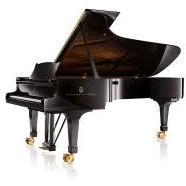Leaderboard
Popular Content
Showing content with the highest reputation on 12/25/2022 in all areas
-
Subtitled "Night Music for Large String Orchestra", this is an old piece that I salvaged from back when I was writing straight into the sequencer. I copied it to paper and finished it, then entered it into Musescore 4. This is my first experience with Musescore 4 and Muse Sounds and I'm pretty satisfied once I worked out some of the kinks! I think I probably won't need to use any DAW given its capability. The key signature for this piece is A major because the piece is bi-tonal. It's in both F# and C and A major is right in between those two so it was the most convenient key signature. This is version 3 - Musescore kept omitting certain notes for some reason. This piece is partly inspired by Bartok's Music for Strings, Percussion and Celesta, although I hope you agree that it is quite different. Thanks for listening and I'd appreciate any constructive comments, observations or critiques you're willing to give! Merry Christmas! Edit: I've updated the score and mp3 to include some more dynamics, sul ponticello instead of mutes, and centered the panning of the contrabasses.4 points
-
It's a grand piece without doubt, accomplished polyphonic lines that develop interesting and engaging harmonies. Above all, superb development and unification of the thematic material. Accomplished phrasing. But while I think the composition is fine, some things didn't convince: the strings sound (as Chopin says) stock. That's fine for a mock-up but I felt the material deserved better than that. The timbral variation between pp and f suggested the "layering" was too limited if samples, or the modelling needs a bit of a touch up. The stereo spread seemed too left and right. Can you spread as well as pan the sound in Musescore? I was listening on earphones and had to switch in the stereo cross-feeder. The climax at around 3'50" seemed unduly dense (around bar 80). This may be due to the sounds themselves. It might also be the stereo directionality. Your scoring seems as good as it gets. There was a point in the score. The sudden switch to mute in bars 14 and 90 (there may be others but I didn't stop to look at the score in fine detail). Violin 1 in bar 14 is asked to flick down the mute in an instant at the end of a tremolo, not even a semiquaver rest to do it so the player will have to be bowing very close to the frog! In bar 90 all violins and violas mute very quickly and come back to senza just as quickly a few bars later. It'll probably take 1/2 a second longer to lift the mute. Viola 2 is expected to do so instantly in bar 101. This assumes you're happy with the clip-on mutes and don't want a heavier one pushed on the bridge which needs a couple of bars at least (at your tempi) to achieve. I'll have to ask you to excuse me agreeing with Chopin about not giving up with DAWs. They do offer far finer control than sounds generated through notation software. (I mean, there might be some software about that can do it (have yet to hear one) but great though the improvements are in Musescore 4, they aren't there yet.) The dynamic variation, particularly within phrases, doesn't always yield a good result. So aside from these production issues the music is superb. Congrats.2 points
-
Wow Peter, this is superb. I'm not blowing smoke up your ass just because you're my friend, it really is good. First, I think anyone wanting to become a better composer should take notes listening to this. You were able to stretch material from a simple theme and develop it across 7 minutes of music. It's very through composed. Your theme is very catchy too, I really like the constantly changing intervals with the wide leaps. You also do a great job with textures too; there's lot of variety with tutti and sparse sections. Maybe one thing you could think about for the future would be to give solo instruments a little time as well. Might sound cool if for example violin group lines played a majority of the phrases, but giving a solo violin a melody, especially in lighter textures, to vary up the timbre of such a homogenous ensemble. I really liked the pizzicato rhythmic spots, it gave me video game OST vibes. In fact, the entire piece sounded like it could have been in a game soundtrack. You're game influences are strong lol, which I think is a good thing. Even if people who listen to your music don't have much classical music listening experience, they perhaps would be subconsciously drawn to your music, bringing up some nostalgic memory of some game they loved. You don't let any one instrument be more important than the others. You cleverly give the main theme to many of the instruments, really giving variety to the sound, as well as making all the parts interesting. I really enjoy the contrabass, I think it fits into a large string ensemble well. I'm on the team of write for whatever ensemble you want, unless you're writing for a specific ensemble. You could always amend the music written to fit something specific that may come up (and I hope it does!), but go with what you want the music to sound like first. Most of us will only have the sound samples as our voice for most of our pieces, so make it sound like you want. Speaking of which, the only thing I didn't like was the mixing. I suppose it's the default way musescore arranges the panning, but I hated that the 1st violins were all the way to the left, and the bass was all the way right. If it gives you the option, put the bass down the center and then spread out the other instruments. I know you heard my piece "A Dream's End", and that was a mistake I made in hindsight with the mixing. I was going for "if you were listening live", but it doesn't come across well, especially with headphones. I hope there's an option for that in musescore, but if not, it's not that big of a deal since the sound sample changes they've recently made are a very LARGE improvement. I'm curious on the key signature decision. I have no frame of reference since I've only ever written two bi-tonal pieces, but why A Major? Sure it's "in the middle" for the two keys you used, but I would have thought just not using a key signature would be a better option. I'm interested to hear your thoughts on this. I hear Bartok influence, but don't hear Bartok in this. This was completely your own music. I know this isn't exactly a "new" piece from you (not sure how much of it was written in the DAW some time ago), but this was a treat to hear, and it made Christmas for me. You know I'm a huge fan of your work, and an even bigger fan of your character, so thanks so much for posting this piece. I hope the changes made to musescore continue to better represent your musical ideas, and inspire you more to compose more often. I know you're busy with rl stuff, but I'm always excited to see the newest PeterthePapercomPoser piece. Merry Christmas, and congrats on such a wonderfully crafted piece of music!2 points
-
Don't neglect your Daw! The strings are not bad for stock sounds. MuseScore for the win there. I will still say though, please do not give up your Daw over the stock sounds (if you can afford to do so), because EWQL and the professional sounds are still better. Strings are VERY hard to emulate, and although the new sounds are good, they still sound very stock and synthesized. Musicality of your piece Given the nature of your work, I was clearly able to pick out your motif, as it is evident from the very beginning, and love how you do variations around it throughout the entire piece. This is a very well written work. I also can appreciate how you mixed a hint of romanticism in here (I love Romanticism, so extra brownie points from me here 😄). The pianissimo sections are a little too soft, and the instruments sometimes sound muddled. But in a piece like this, instrument clarity is critical given the dissonance and reliance of different instruments picking up parts of the motif and rhythms. This is a perfect example of why you'd want specialized instruments over stock. It's also a good example of the importance of orchestration. Instrumentation / Orchestration I almost want to hear how this piece would sound with a chamber orchestra, or even string quintet. Solo instruments may help bring out the individual parts a little more effectively. Your signature by Gustav Mahler, "A symphony must be like the world - it must contain everything" is actually something I disagree with. I'm more of a minimalist and I think too many instruments can sometimes ruin the listening experience. Don't get me wrong, I love a grand orchestra! But in this case, I feel like you can nix 2 instruments, and perhaps convert this to a solo instrument listening experience. Nixing instruments - maybe Perhaps you can nix the second viola and the contra bass. The contra bass doesn't have much of a part, and the 2nd viola is unnecessary given that you have 2 cellos. This would simplify your piece, force you to merge parts, and this would make your instrumentation cleaner. Then you'd have yourself a really nice quintet. Fewer players = lower cost and easier to manage and play (I know we aren't always thinking about that), but you'd get the added benefit of simpler orchestration and a cleaner audio. Please listen to... I want you to listen to the first movement of Sergei Bortkiewicz's Piano Concerto 2. He wrote the piano concerto for the left hand only, and it shows you that you can make really awesome and full sounding music with 1 track of music; it can be done. There's also a solo violin in there somewhere, and it is super clean. Solo instruments are great, even in big orchestras!2 points
-
(I pretty much copied the description of my video for this commentary.) The story with this piece is quite interesting. On the 22th of December of last year I woke up a bit late, and as it is common in me I was tired and I tried to keep sleeping. But for some reason some negative thoughts about a friendship hit me and made me feel bad and guilty (don't ask personal questions please, thanks), and out of nowhere the Rachmaninoff-like passage of this piece came to my mind. It felt as if my mind was trying to say "sorry" through music because I struggle with words sometimes. The thing is that I decided to go to my piano to write down the fragment because I considered it was too good to let it slip from my hands (at the time I had no idea it was similar to the 3rd movement of Rachmaninoff's 3rd symphony)(there is also a bit similar to Chopin's Op.10 No.3). So this piece pretty much originated from a dream, because I wasn't really awake (I ususally know when I'm dreaming). I even cried when I found the Ebm7 chord with that dissonant leap that goes to the 9th, and I don't think I have ever composed anything else so straight from my heart. The last section also hit me pretty hard when I got it (yeah, I cried again...), but I actually almost improvised it, I never experienced such fluency in a composition. The piece still took me 10 hours to make. Due to some thematic connections, style and a suggestion by my friend Ferran I decided to combine this piece with Nostalgia and create a small set. It will be called "Two dream fantasies". Another detail I could mention is that the repeated chords at the beginning are inspired by my friend Theodore Servin. I hope you enjoy the piece and that you can feel all the emotion I poured into it. 🙂1 point
-
Hi everyone. This week I've revisited my piece "The Sun Dappled Forest" (1st movt), and replaced all the electronic instruments with orchestral equivalents. Hope Peter approves! I've also added lots of new embellishments, that hopefully make it more interesting?1 point
-
Really love this piece, Peter! As a motivic guy I really how you develop and twist the motives to all parts, but the manipulation itself is espressive, not only "purposeful and deliberate". I always love your texture and counterpoint. In this piece I love the occasional rests. It really sounds to me like a breath before a sigh! And the contrast between tutti and sparse sections mentioned by @Thatguy v2.0 is great as well! Letting the concertmaster to play a solo melody is a really great idea though. Every time I listen to the ending of the slow movement of Brahms' 1st, or the solo passages in Mahler 2nd makes me shill. This will add something like an "individual suffering" instead all together a collective one! I do find some influence of the slow movement and some of the sections of the fugal opening of Bartok's Music for Strings. But I also hear something personal from you. Bartok's Music for Strings is dark and mysterious, something unfathomable except the folk last movement; yours here is dark but sometimes gets to pathos which I can feel more easily here. (Good word of "accessible" by @Rich!) I love how you wander between tonality and ambiguious tonality (for me it doesn't reach dissonant post tonality), quite late romantic in this. I absolutely love b.39-52 and b.163-176, which are the similar passages of a more tonal falling fourth motive when the opening theme disappears! So beautiful inside a more ambiguious tonality context! I think using the key signature of 3 sharps a good choice. For me this piece is not really that atonal to use no key signatures. For the mixing itself, I really don't care! I can imagine it played a concert hall by a real string orchestra anyways, so that's not a problem. Hopefully you will continue to produce this kind of compositions due to Musescore 4! Thank you for your sharing, Peter! Henry1 point
-
A peasant enough piece and yes, minimalist in that it doesn't really develop aside from changing timbres, much as an organist might change stops to keep up interest, about which there's nothing wrong if that's your style. However, even minimalist composers bring in changes of material every few minutes. Have a listen to Mike Nyman or Philip Glass. Glass' Satyagraha (played on an organ) is a beautiful work. See below, a better rendition than I posted last night. A possible development now is learning how to bring in new keys either using conventional modulation or more abruptly if you choose. All good work, anyway.1 point
-
Very interested I've written lot's of EDM style music, nothing too artsy Hmm, I kind of understand that. I feel like with the instruments we play well we tend to fall into the pitfalls of habit and patterns we're familiar with. It's a good thing though that you chose to write for different ensembles lately, because we're no longer restricted by what we know is "playable" or easy to execute, and rely on the performer's interpretation and comments we receive to continue to grow in writing for instruments we don't play. HOWEVER, I can guarantee you that you write for the cello better than I do, since I've never held one. And your cello music will always have more intuition to it since you know what you're doing with the instrument. I've looked at guitar pieces posted here and just thought to myself "wow, that would be murder to play", because the composer isn't a guitarist. There are also guitarist/composers here that post their music and it looks very familiar and comfortable when I read along with the score. Plus, your lines might be a bit more daring writing for cello than for other instruments. Beethoven's piano sonata's and Paganini's violin caprices are renowned for a reason. I like the cello piece you posted a lot! And I'm really curious to hear how your newer cello music sounds with everything you're continuing to learn as a composer takes effect. It is. There are people who I know from this site that I talk to very frequently, and it wouldn't have happened if I hadn't taken the time to share a bit of feedback on their work. Looks like you're doing the same, keep it up, and keep composing!1 point
-
Peter--- i thought this was a great piece---very evocative of Bartok's "night music", yet more accessible ("Accessible" is a compliment in my book!). I would love to experiment with this type of bitonal/atonal writing at some point. The atmospherics create a sense of rootlessness, mystery, and anticipation that can't be matched in any other music mode--as shown here! Very nicely done.1 point
-
this is great! Those musescore sounds really work well. The continuity surpasses my abilities by a lot. I guess my criticism would be that it needs more emotive moments harmonically. Idk thats just my personal taste. There are quite a few though that I noticed that I thought were pretty adventurous and spot on. Overall, great work! Your skills continue to grow homie.1 point
-
Lovely piece, the two instruments play around well together. the music resembles the title and idea. It was a surprise the second section, faster and almost jazzy. I'm not sure if it's the mixing or the writing. At some points, the bass notes in the piano seem to be too close.1 point
-
Thanks to @Brandon S, @Left Unexplained, @Luis Hernández, @mercurypickles, @Aiwendil, @Carl Koh Wei Hao, @aMusicComposer, @Thatguy v2.0, and @Ferrum for participating in the Christmas Music Event 2022! You have all been given special participant Christmas badges! And thanks to @aMusicComposer for organizing/facilitating this great Christmas/Holiday/Winter Music festival! He is the recipient of the "Community Organizer" badge! Merry Christmas everyone and Happy New Year!1 point
-
Hi Henry. So glad you enjoyed it! I didn't really set out to make a minimalist piece, it just ended up that way, because I'm still a novice composer, and minimalism is easier to write! Hopefully I can write something with more dense orchestration eventually. It is indeed a harpsichord you're hearing. The French horn section at the end is supposed to be a fanfare leading into the second movement, which you can find here: It also helps to conceal the change in tempo, as the second movement has a faster beat. I've been told I should extend the second movement, and build up to a tutti at the end. So that's my next job! Also forgot to say, Merry Christmas and Happy Holidays to all the Forum! Alex1 point
-
Honestly, your working progress isn't really that much different other than the dynamics, tempo, and articulation part, and also I do that all on DAW. I always record myself humming to a theme that just popped out of my head when I was bored in college, or well, when I take baths (seriously, I get so many ideas for theme or motivic development just by taking baths). Though with this particular piece, I built the theme from scratch. It IS really fascinating to see many different approach of composition methods here. Thank you for sharing!1 point
-
I've been a bit quiet in the forum the last few weeks -despite coming back from a long hiatus. This is what I've been working on. I'm sharing it here for a few reasons.... 1. This piece has taken up every thought in my head. Most people would see that and scoff (or perhaps prep the sanitarium!) I think many of us here feel this about some of our work. I don't normally labor over a piece as much as I have this one. So, this work definitely is a bit more refined then many of my others. 2. The work is highly personal in that the thematic material is my first name (a technique employed by countless composers known as nomenclature). The nomenclature here is Db-A-Bb-D-E. This 5 note motif serves as the basis for the first movement and large swaths of the second movement. The motif will also appear in the 3rd and final movement (which isn't finished yet). 3. Another motif also appears in the second movement that I plan to utilize in the third movement as well: G-C-D. This motif appears first in a very stark chord towards the end of the second movement. I hope you guys enjoy this work in progress. Like I said, It's taken a large amount of time over the last few weeks to compose. There's definitely a sense of seriousness to it. Any comments would be appreciated.1 point
-
Wow, yes definitely let me know when you post the score. This is wonderful. I really love the dissonant sections, your harmony is great! Beethoven didn't think Fur Elise was good enough to be published, yet guess which piece is one of the most well known in classical music. Sometimes what we dismiss as too simple or short may be the words you speak loudest with. Love the music, great job!1 point
-
For some reason I pictured Edward Scissorhands while listening to this. lol, I love it! It has a very film type of feel to it, was that the effect you were going for? The constant arpeggios in the upper register sounded wonderful, very idiomatic to snow at night or something (or perhaps flakes of ice being shaved off from scissors 😄) Well done, lovely piece!1 point
-
Hello! Thank you so much for spending time with my music, your honest reviews, and your words of encouragement! The musical direction I've taken this past year feels like the most honest one yet, but I feel that I owe a lot to past traditions. A few people have compared my recent work to Prokofiev and Satie (to my delight! I especially love Prokofiev), plus while writing this piece I closely studied Pierné's Saxophone Quartet and fell in love with his "sultry" chromaticism that must have rubbed off on me: https://www.youtube.com/watch?v=d3rynam8QeU But, it truly moved me to hear that you detect originality in my work. 😊 I am definitely still on a journey of discovering my voice and wrote several short pieces for school this year that each sound wildly different. I graduated high school in the Spring and originally wanted to take a gap year this year and apply to music school next year, but my mother and I discovered some individual courses I could enroll in online for credit in the meantime! The first course, which I took this Summer, was a primer on film scoring (my dream career). For one assignment, I chose to create a short electronic score demo (completely new territory for me) given a science fiction film synopsis. Let me know if you are ever interested in hearing that -- I would be curious to know your thoughts. Do you have any experience with electronic/synthesized music? Re: bar 67: While I was drafting the piece I worked in concert pitch (maybe that gives me away as a strings player!), and beat 3 was in concert F sharp minor, so I was using sharps, but even in that case I am not sure why I couldn't have used sharps at the beginning of the bar as well (for concert F sharp major). I must have missed the inconsistency when switching to transposed pitch. The soprano part is now written in A flat major to G sharp minor, and since A flat minor is an acceptable key as far as I know, I will upload a revised score soon with flats throughout the bar. Thank you for catching that! Your idea for bar 125 is interesting. I'm mainly keeping that figure (a "pyramid texture", as my teacher called it) the same both times because it only occurs those two times, in the opening and at 125, and I want the listener to recognize it right away. However, if I were to add another statement somewhere else in the piece I would happily experiment with the order of the voices. I am curious what you think of the idea of repeating it once more. I agree that the picardy third ending is awkward, I was never that happy with it. 😆 I am so glad you like my rhythms, they were a joy to write. I will keep your advice on variation in mind for the future. I've found myself shying away from writing for the cello the past couple of years, maybe because the instrument is so familiar that I overthink my writing and end up leaving it unfinished...? 😋 I do have one work featuring the cello that's public on SoundCloud and my website; it was actually my first finished attempt at a classical-style composition when I was a rising sophomore with one year of youth orchestra under my belt, the thing I feel kickstarted both my passion for and understanding of this kind of composition. It's a cheerful Mozartean glimpse of my innocent younger self that will probably seem worlds away from "Violet" and "Windchill". The sample library (I used Flat.io at the time) does not help with its crude obviousness, but it is still kind of a nostalgic time capsule for me. I will post it here for everyone: Enjoy! Thank you again for your kind words. I've loved discovering and reviewing others' work on here, too. The atmosphere definitely seems positive and supportive. Happy holidays! ~ Gwendolyn1 point
-
Really has nothing to say to this beautiful piece! Just wonderful and amazing! Great variation! Wow such a detailed explaination on your compositional method. Really interesting to know other conposers' approach! Usually my working progress is: 1. Burst out of inspiration suddenly, immediately jot it down. 2. Develop the idea both consciously and subconsciously, and ensure the developments tightly connected. 3. If there enough passages, start composing on the notation software, at the same time carry a notebook to jot down any relevant ideas and inspirations. My approach is always on ideas first, and how its sound comes later. For example I always add dynamincs, tempo and articulation much later than writing ideas first. I have the sound in my mind and don't think I have to add those little details first since it will prevent me to compose new passages, rather than help me. And my approach is usually absolute, not to depict real sounds. It's so fascinating here to see different approaches and styles in YC! Really grateful for your sharing! And Merry Christmas! Henry1 point
-
Lovely stuff. Nothing really to fault in terms of material and developmental but I'd need to see a score to give me a better idea of that (no pressure though, take whatever time you need). This piece really really needs a live recording if you have any way of organising that! The criticism I can come up with regards the flute writing. Everything is within range and you use the entire range throughout the piece - great for colours. However, right near beginning you hit lots of very top C's and B's. Although not technically bad, I wouldn't use them so near the start as for one thing it will tire out the performer. Also if you are using these extremes of range in the opening, it doesn't leave you any register to build intensity with later in the piece. Just a thought. Thanks so much for sharing this piece and entering the Christmas event!1 point
-
This reminds me to the Aeolian Harp and pieces like that, by Cowell. I like it.1 point
-
Well, hats off to you for having the determination to complete a full 4 movement work, and the courage to post it here for comment and feedback. It’s too bad that the first commenter felt free to snipe at your effort without even listening to it; that’s not typically a way to earn respect for one’s opinions. I did listen to your entire symphony. That said, I’m not going to listen a second time. It’s clearly a beginner’s effort and a learning exercise. My advice would be to call it done (I agree with your decision not to make changes), set it aside, and begin to work with smaller forms to develop your skills. Here are some things I’d suggest you work on: 1. How to craft a melodic line. With a couple of exceptions, your melodies are just little patterns that don’t go anywhere. If your intent is to write in the classical-romantic tradition, you need to figure out what makes a melody and what makes a developable theme. 2. Types of polyphony other than melody-and-accompaniment. The vast majority of your symphony consists of little melodic-like-patterns against a block-chord accompaniment. This just gets tiresome. 3. How to develop a musical idea. A symphonic movement is long because it takes that long for the material to be developed and for the composer to say what needs to be said. Your symphony has, to my ear, about 8 minutes of content stretched out to 47 minutes by repetition. Repetition is NOT development. 4. An awareness of what real instruments, played by real humans, can and can’t do. Your second movement scherzo has some potential, but your tuba player has died of hypoxia before it’s half done. The rest of your brass section expires in the finale. You don’t gain credibility by being that conspicuously unaware. I don’t want to pile on any more or be discouraging. I also once tried to write a symphony, long before I knew what I was doing. I finished the opening movement and a little bit of a scherzo. The experience taught me that I had a lot to learn about symphonies, but that it was learnable. It’s possible that I know what I’m doing now, but I actually don’t think I’ll ever write one, mainly because the expectations of audiences have changed so much.1 point
-
DUDE!!! This is ridiculous. I never listen to music in this style of writing, but I'm fascinated with how much I enjoy your stuff. I didn't realize at first how "complete" the work is so far, you sure as hell have been busy working on this. I generally don't like to comment too much on incomplete works, so I'll save a more detailed review once you complete it in it's entirety. Just know that I am a huge fan of this. I will say one thing though. I kind of noticed a pattern in your music. I feel like you either have fugal type sections with lots of counterpoint (which you do brilliantly), or you write these static rhythms with a melody intertwined (also, you write this way brilliantly). The 1st movement kind of has an ABA form, like counterpoint, rhythmic section, then counterpoint. The 2nd movement has more "sections" to it, but it also follows the same format in a way. I'd really like to see the 3rd movement be completely different somehow, for an overall change in the grander textures. Maybe you have long chordal sections, or have a longer melody at the forefront, possibly sprinkling in counterpoint filled sections or rhythmic based ones to fill in the gaps? I dunno, just my initial impression. Very well done so far, I'm excited to pick your brain with this piece once you complete it. Thanks for sharing your progress so far!0 points

.thumb.png.8b5b433a341551e913a34392660bc95b.png)








